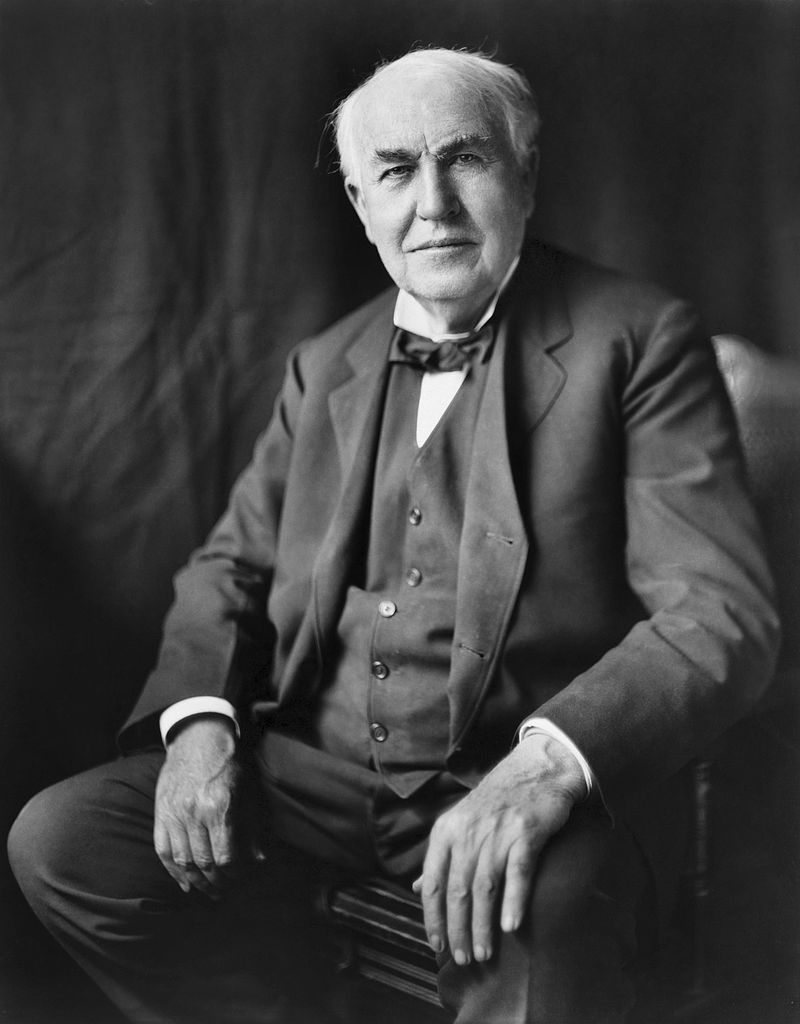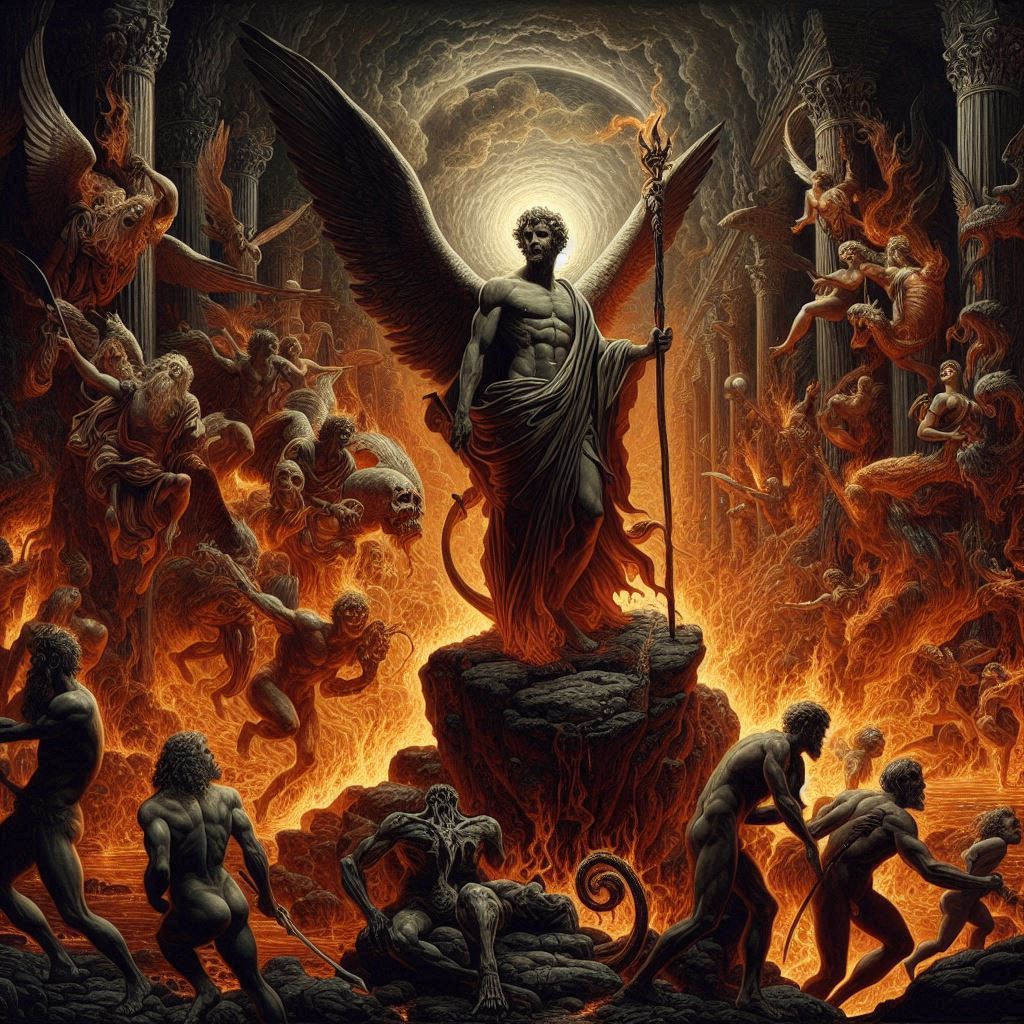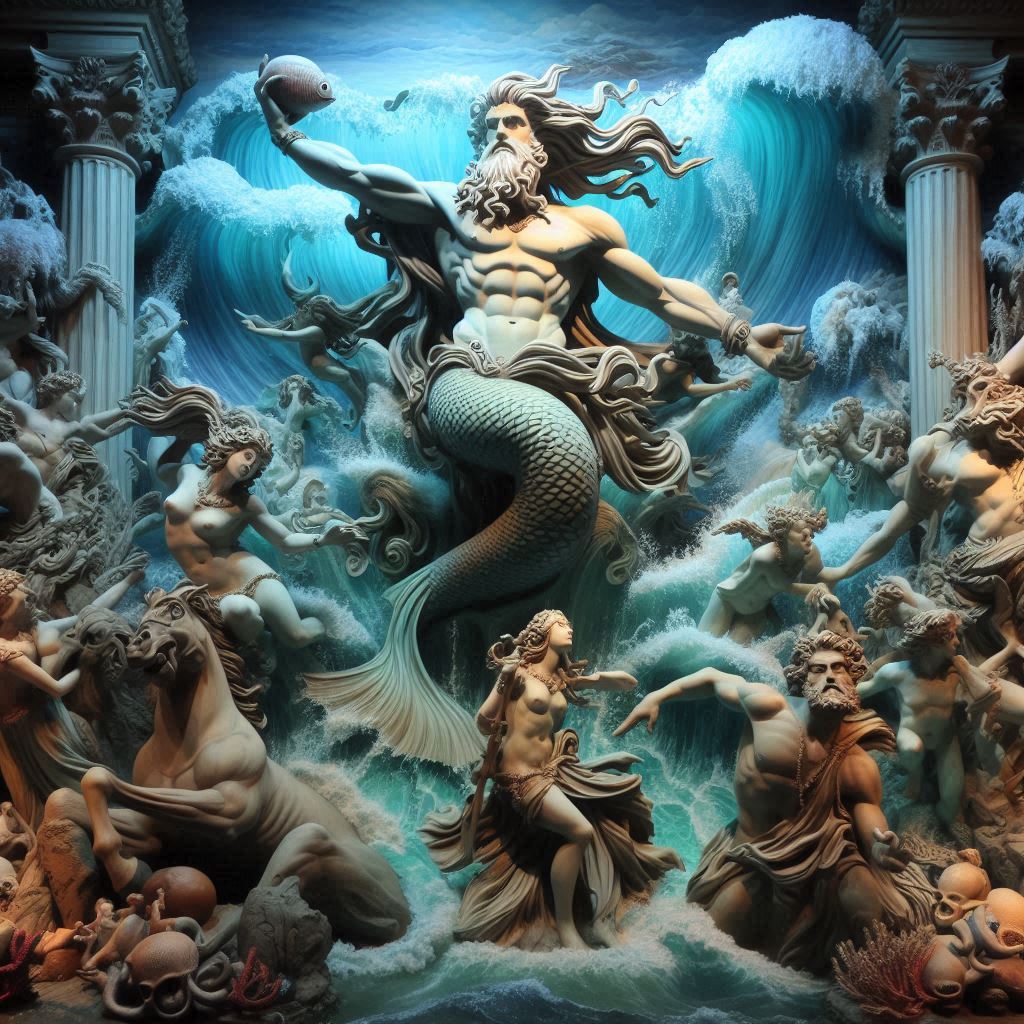Thomas Edison (1847-1931) was an American inventor and businessman, widely recognized for his contributions to the development of the modern electric power system. Holding over 1,000 patents, Edison is best known for inventing the phonograph, practical electric light bulb, and the motion picture camera. His work played a pivotal role in shaping the technological landscape of the late 19th and early 20th centuries. Edison also established the world’s first industrial research laboratory and was a key figure in the formation of General Electric, one of the largest and most diversified industrial corporations globally.
Early Life and Education
Thomas Alva Edison’s early life laid the foundation for his extraordinary career as an inventor and entrepreneur. Born on February 11, 1847, in Milan, Ohio, Edison was the seventh and youngest child of Samuel and Nancy Edison. His childhood was marked by curiosity, a characteristic that would define his future endeavors.
Edison’s formal education was limited and unconventional. He attended school for only a few months before his mother, Nancy, became his primary educator. Recognizing her son’s keen interest in learning, she fostered his curiosity and provided an environment conducive to exploration. Edison’s early education included reading classics, history, and scientific texts, setting the stage for a self-directed learning journey.
At the age of seven, Edison’s family moved to Port Huron, Michigan, where he began selling newspapers and snacks on the Grand Trunk Railroad. This experience not only introduced him to the world of commerce but also allowed him to indulge in his passion for reading. Edison set up a small laboratory in the baggage car, where he conducted chemistry experiments and read scientific books between selling goods.
Edison’s insatiable curiosity soon outgrew the confines of the railroad car, leading him to take on various odd jobs to support his scientific pursuits. He worked as a telegraph operator, a position that not only provided financial stability but also exposed him to the emerging field of electrical communication. This exposure ignited Edison’s fascination with electricity and laid the groundwork for his future inventions.
In 1862, at the age of 15, Edison began working as a telegraph operator for the Grand Trunk Railway. This job not only deepened his understanding of electrical systems but also allowed him to engage in continuous experimentation during his free time. He often conducted electrical experiments in the baggage car, further honing his skills in electrical engineering.
Edison’s passion for experimentation eventually led to his first invention: an improved stock ticker. In 1869, at the age of 22, he received his first patent for this device. The improved stock ticker caught the attention of Western Union, and Edison used the proceeds from the sale of the invention to establish his first laboratory in Newark, New Jersey. This marked the beginning of his journey as an independent inventor and entrepreneur.
While the stock ticker provided Edison with a financial boost, it was his move to Menlo Park, New Jersey, in 1876, that truly defined the trajectory of his career. In Menlo Park, Edison established what would become the world’s first industrial research laboratory. This facility, later known as the “Invention Factory,” brought together a team of skilled scientists and engineers, creating an environment conducive to collaborative innovation.
Edison’s early education may have been limited, but his experiences in the practical world of work and his insatiable curiosity served as a formidable education in itself. His ability to turn challenges into opportunities and his relentless pursuit of knowledge set the stage for the groundbreaking inventions that would follow.
Throughout his life, Edison remained largely self-taught, emphasizing the importance of hands-on experimentation and real-world experience. His approach to learning and innovation reflected a belief in the power of practical knowledge and the idea that true understanding comes from doing.
Edison’s early life and education were characterized by a combination of formal and informal learning, with a strong emphasis on practical application. His experiences as a newspaper seller, telegraph operator, and inventor of the stock ticker contributed to his diverse skill set and laid the groundwork for his future achievements.
Inventions and Discoveries
Thomas Edison’s legacy is indelibly tied to his numerous inventions and discoveries, which spanned a wide array of fields and significantly impacted the course of technological progress. Edison’s prolific career as an inventor was characterized by relentless experimentation, innovative thinking, and a dedication to practical solutions. From the phonograph to the electric light bulb, his contributions have left an enduring mark on the world.
One of Edison’s earliest significant inventions was the phonograph, patented in 1878. The phonograph was a groundbreaking device that could both record and reproduce sound. Edison’s inspiration for the phonograph came from his fascination with the telegraph and the idea of capturing and reproducing sounds. The invention marked a revolutionary development in audio technology, paving the way for the recording and playback of music and spoken word.
Following the success of the phonograph, Edison set his sights on another transformative invention—the incandescent light bulb. In 1879, he unveiled a practical and commercially viable electric light bulb. Edison’s light bulb utilized a thin filament, usually made of carbonized bamboo, which could glow for hours without burning out. The introduction of the electric light bulb was a watershed moment, illuminating homes, businesses, and cities and fundamentally altering the way people lived and worked.
Edison’s work on the electric light system extended beyond the bulb itself. He developed a comprehensive electric power distribution system, including the creation of power stations and electrical grids. This system laid the foundation for the widespread adoption of electricity and the development of modern electrical infrastructure. The practical application of electric power not only revolutionized lighting but also transformed various industries, contributing to the rise of the 24-hour economy.
The electric light system also led to the formation of the Edison Electric Light Company in 1882. Edison’s entrepreneurial spirit and keen business acumen played a crucial role in the company’s success. He was not only an inventor but also a savvy businessman who understood the importance of commercializing his inventions. The establishment of the Edison Electric Light Company marked a turning point in the monetization of electric lighting and power distribution.
Edison’s contributions to the field of electricity extended to the development of the electric utility industry. He played a pivotal role in creating the first electric utility in the United States, the Pearl Street Central Power Station in Manhattan, which began operations in 1882. This power station, designed by Edison, supplied electricity to customers in the surrounding area, laying the groundwork for the modern electric utility model.
In addition to his work in the realm of electricity, Edison made significant contributions to the burgeoning field of motion pictures. In 1888, he filed a patent for the kinetoscope, an early motion picture camera. The kinetoscope allowed for the creation of short films, capturing motion and providing audiences with a novel form of entertainment. Edison’s interest in motion pictures led to the establishment of the Black Maria, the world’s first motion picture studio, where he produced short films featuring a variety of subjects.
Edison’s foray into motion pictures demonstrated his ability to adapt to emerging technologies and diversify his inventive pursuits. The Black Maria became a hub of creativity, with Edison overseeing the production of numerous short films. While Edison’s involvement in the film industry waned over time, his early contributions laid the groundwork for the evolution of cinema as a major form of entertainment.
Another area of innovation for Edison was the development of storage batteries. In 1903, he introduced the nickel-iron battery, which found applications in electric vehicles and portable devices. Edison’s battery technology was particularly durable and had a longer lifespan compared to contemporary options. Although the nickel-iron battery did not achieve widespread commercial success during Edison’s lifetime, it paved the way for advancements in battery technology that would become increasingly relevant in the modern era.
Edison’s relentless pursuit of innovation also led him to explore the field of ore milling. In the early 20th century, he developed a process to extract iron ore from low-grade sources, making it economically viable. Edison’s ore milling technology aimed to address the diminishing quality of high-grade iron ore and played a role in sustaining the iron and steel industry.
While Edison’s contributions to technology were numerous, his career was not without controversies. The most notable rivalry was with Nikola Tesla during the “War of the Currents.” Edison championed direct current (DC) electrical systems, while Tesla advocated for alternating current (AC). The intense competition between these two visionaries included public demonstrations, debates, and propaganda campaigns. Ultimately, AC power, with its greater efficiency for long-distance transmission, prevailed and became the standard for electrical power distribution.
Edison’s legacy is not only defined by individual inventions but also by his approach to innovation. He established the world’s first industrial research laboratory in Menlo Park, where a team of inventors and scientists collaborated on various projects. This collaborative model became a paradigm for future research and development efforts, fostering an environment that encouraged creativity and experimentation.
The Wizard of Menlo Park
Edison’s moniker, “The Wizard of Menlo Park,” is derived from the location of his most famous laboratory in Menlo Park, New Jersey. It was at this facility that Edison established the world’s first industrial research laboratory in 1876. The laboratory, later nicknamed the “Invention Factory,” became a hub of innovation, housing a diverse team of scientists, engineers, and skilled workers who collaborated on a myriad of projects.
The Menlo Park laboratory represented a departure from traditional approaches to invention. Edison’s vision went beyond individual innovations; he sought to create a systematic and collaborative environment where ideas could flourish. This marked a paradigm shift in the way research and development were conducted, setting the stage for modern industrial laboratories.
One of Edison’s earliest achievements at Menlo Park was the invention of the phonograph in 1877. The phonograph, a device capable of both recording and reproducing sound, captured the public’s imagination and showcased Edison’s prowess as an inventor. The demonstration of the phonograph at the offices of Scientific American in December 1877 marked a turning point in Edison’s career, garnering widespread attention and establishing him as a leading figure in the world of invention.
Following the success of the phonograph, Edison’s attention turned to the development of the incandescent light bulb. In 1879, he unveiled a practical electric light bulb that would go on to revolutionize the way people lived and worked. The bulb’s thin filament, usually made of carbonized bamboo, could glow for extended periods without burning out. This invention marked the birth of practical electric lighting, paving the way for the electrification of homes, businesses, and cities.
The Menlo Park laboratory was not just a place for developing individual inventions; it was a crucible of creativity where Edison and his team tackled a diverse range of challenges. They worked on improving existing inventions and exploring new frontiers. The laboratory produced a stream of innovations, earning Edison the nickname “The Wizard of Menlo Park” and solidifying his status as a leading force in the world of invention.
Edison’s approach to invention was characterized by relentless experimentation and a willingness to embrace failure as part of the creative process. He once famously remarked, “I have not failed. I’ve just found 10,000 ways that won’t work.” This mindset exemplified his determination and resilience in the face of challenges. Edison’s success was not overnight; it was the result of countless hours of hard work, trial, and error.
In addition to his work on the phonograph and the electric light bulb, Edison delved into the development of electrical systems. He created a comprehensive electric power distribution system, including the establishment of power stations and electrical grids. This system laid the groundwork for the widespread adoption of electricity, transforming the way societies functioned and opening up new possibilities for industry and commerce.
Edison’s entrepreneurial spirit was a driving force behind the establishment of the Edison Electric Light Company in 1882. This venture aimed to promote and market his inventions, further solidifying the integration of Edison’s inventive genius with commercial success. His ability to not only innovate but also to navigate the business landscape played a crucial role in shaping the impact of his inventions on society.
While the Menlo Park laboratory was a beacon of innovation, Edison’s quest for progress did not end there. In 1887, he moved his operations to West Orange, New Jersey, where he established a larger and more sophisticated laboratory complex. This facility, known as the Thomas Edison National Historical Park, continued to be a center for innovation and invention.
Edison’s work extended beyond the realms of electricity and sound. His interest in motion pictures led to the development of the kinetoscope, an early motion picture camera. In 1891, he filed a patent for the kinetoscope, which paved the way for the creation of short films and contributed to the evolution of the film industry. Edison’s role as a pioneer in motion pictures showcased his ability to adapt to emerging technologies and diversify his inventive pursuits.
The Black Maria, a motion picture studio built at the West Orange complex, further emphasized Edison’s commitment to the nascent film industry. The studio, the first of its kind, featured a revolving roof to capture natural light and produced some of the earliest films in history. Edison’s contributions to motion pictures demonstrated his foresight in recognizing the potential of this new medium.
In the later years of his career, Edison continued to explore diverse fields, including the development of storage batteries. In 1903, he introduced the nickel-iron battery, which found applications in electric vehicles and portable devices. Edison’s foray into battery technology reflected his ongoing commitment to addressing practical challenges and improving everyday life.
The Wizard of Menlo Park’s impact was not limited to the realm of technology; it extended to the very fabric of society. Edison’s inventions transformed the way people lived, worked, and entertained themselves. The widespread adoption of electric lighting revolutionized urban development, extending productivity into the night and fundamentally changing the daily routines of individuals.
Challenges and Failures
Thomas Edison’s journey as a prolific inventor and entrepreneur was marked by numerous challenges and failures, each of which played a crucial role in shaping his character and approach to innovation. Edison’s ability to overcome setbacks, coupled with his resilience and determination, stands as a testament to his indomitable spirit.
One of Edison’s early challenges was his limited formal education. He attended school for only a few months before his mother, Nancy Edison, became his primary educator. While Edison’s formal education was cut short, his mother’s encouragement of his curiosity and his own voracious appetite for learning set the stage for a lifetime of self-directed education. This early challenge of limited formal schooling fostered Edison’s independent thinking and instilled in him the belief that true knowledge is acquired through practical experience.
Edison’s ventures into entrepreneurship also faced hurdles. His first major business endeavor was the Gold and Stock Telegraph Company, which he established in the early 1860s. The venture encountered financial difficulties and eventually went bankrupt. Despite this setback, Edison did not shy away from the world of business. He went on to establish other businesses and continued to refine his entrepreneurial skills, learning valuable lessons from each experience.
The invention of the quadruplex telegraph, a device capable of transmitting multiple messages simultaneously over a single wire, presented Edison with both technical and financial challenges. Despite successfully patenting the invention in 1874, Edison struggled to find widespread adoption of the technology. The telegraph industry was resistant to change, and Edison faced skepticism from established telegraph companies. This period marked a challenging phase in Edison’s career, where he confronted the resistance of existing industries to new technologies.
Edison’s foray into the world of electric lighting, while ultimately successful, was not without its share of challenges. The development of the incandescent light bulb required thousands of experiments to identify the right filament material. Edison and his team faced technical obstacles, financial constraints, and the pressure to deliver a commercially viable product. The challenges in perfecting the light bulb were so daunting that Edison quipped, “I have not failed. I’ve just found 10,000 ways that won’t work.” This relentless pursuit of a solution underscored Edison’s resilience in the face of adversity.
The competition between Edison and Nikola Tesla during the “War of the Currents” presented another significant challenge. Edison championed direct current (DC) electrical systems, while Tesla advocated for alternating current (AC). The battle between these two visionaries included public demonstrations, debates, and even controversial tactics such as Edison’s electrocution of animals to discredit AC power. Despite Edison’s efforts, AC power ultimately proved to be a more efficient option for long-distance transmission and became the standard for electrical power distribution.
The financial challenges Edison encountered were not limited to the early years of his career. Despite his success with the phonograph and the electric light, Edison faced financial setbacks, particularly with the Edison Electric Light Company. The company, while successful in promoting electric lighting, struggled with operational costs and financial sustainability. Edison’s ability to navigate these financial challenges, restructure his businesses, and secure partnerships showcased his adaptability and strategic thinking.
The transition from Menlo Park to West Orange in 1887 marked another phase of challenges. Edison moved his operations to a larger and more sophisticated laboratory complex, emphasizing the need for ongoing innovation and adaptation to new technologies. The pressures of managing a larger organization, coupled with the responsibility of overseeing various projects, presented organizational and logistical challenges. However, Edison embraced the opportunities that the expanded facilities provided for more ambitious and diverse research.
Edison’s exploration of ore milling technology, while showcasing his versatility, also encountered obstacles. The process aimed to extract iron ore from low-grade sources economically, but technical challenges and the complexity of the operation posed difficulties. Despite these challenges, Edison’s ore milling technology contributed to sustaining the iron and steel industry during a time of diminishing high-grade iron ore deposits.
Even Edison’s foray into motion pictures faced challenges. While he played a pioneering role in the development of the kinetoscope and established the Black Maria, the world’s first motion picture studio, his involvement in the film industry diminished over time. Edison’s focus on motion pictures waned as other inventors and filmmakers advanced the technology. The rapidly evolving nature of the film industry presented a dynamic challenge that Edison, in part, chose not to actively pursue.
Perhaps one of the most enduring lessons from Edison’s career is his attitude toward failure. Instead of viewing setbacks as insurmountable obstacles, he saw them as integral steps in the journey toward success. His famous quote, “I have not failed. I’ve just found 10,000 ways that won’t work,” encapsulates his mindset. Edison viewed each failure as a valuable lesson, a refinement of his understanding, and a step closer to the right solution.
The challenges and failures Edison faced were not merely stumbling blocks; they were stepping stones that propelled him forward. His resilience, adaptability, and capacity to learn from setbacks were instrumental in his ability to overcome obstacles. Edison’s approach to innovation was iterative, characterized by a continuous cycle of experimentation, failure, and refinement.
Impact on Industry and Society
Thomas Edison’s impact on industry and society is immeasurable, as his groundbreaking inventions and innovative contributions transformed the way people lived, worked, and interacted with the world. From the electric light bulb to the phonograph, Edison’s inventions not only revolutionized technology but also laid the foundation for the modern industrial and technological landscape.
Edison’s most iconic invention, the incandescent light bulb, fundamentally altered the fabric of society. Before the widespread adoption of electric lighting, societies relied on gas lamps, candles, and other traditional sources of illumination. Edison’s electric light bulb, introduced in 1879, provided a safer, more reliable, and efficient source of light. This innovation extended the productive hours of the day, revolutionizing industries, commerce, and everyday life.
The electrification of urban areas, made possible by Edison’s electric light system, spurred unprecedented economic and social changes. Cities that were once limited by the constraints of daylight hours suddenly had the ability to operate around the clock. This shift not only transformed manufacturing processes but also created new opportunities for leisure, entertainment, and cultural activities. The nighttime economy became a reality, fostering growth in various industries and contributing to the evolution of urban life.
Edison’s work in electricity extended beyond the light bulb. He developed a comprehensive electric power distribution system, including power stations and electrical grids. The establishment of the first electric utility, the Pearl Street Central Power Station in Manhattan in 1882, marked the beginning of widespread access to electrical power. This development laid the groundwork for the electrification of homes, businesses, and industries, becoming the catalyst for the Second Industrial Revolution.
The impact of electric power on industry was transformative. Factories and manufacturing plants could now operate more efficiently and with increased output. Electric motors replaced steam engines, providing a cleaner and more flexible source of power. Industries such as textiles, steel, and chemical manufacturing experienced significant advancements, leading to increased productivity and economic growth.
Edison’s influence extended to the emerging film industry. While he was not the sole contributor, his kinetoscope and the establishment of the Black Maria, the world’s first motion picture studio, played a pivotal role in the early development of cinema. The entertainment industry that we know today, with its global reach and cultural significance, has roots in Edison’s vision for motion pictures as a form of mass entertainment.
The phonograph, another of Edison’s groundbreaking inventions, had a profound impact on the music and recording industries. Before the phonograph, music was ephemeral, existing only in live performances. Edison’s invention allowed for the recording and playback of sound, providing people with the ability to enjoy music at their convenience. This innovation laid the foundation for the modern music industry, changing how music was produced, distributed, and consumed.
Edison’s contributions were not confined to technology alone; he also left an indelible mark on the business world. The establishment of the Edison Electric Light Company in 1882 marked a new era in the commercialization of electric lighting. Edison was not only an inventor but also a savvy entrepreneur who understood the importance of marketing and promoting his inventions. His business acumen contributed to the success of his inventions, ensuring their widespread adoption and integration into everyday life.
The impact of Edison’s work on industry and society is perhaps most evident in the evolution of daily life. The conveniences that we take for granted today—such as turning on a light switch, listening to recorded music, or watching a film—can be directly traced back to Edison’s inventive genius. The seamless integration of these technologies into the fabric of society has become so ingrained that it is often overlooked.
Edison’s influence on society is not limited to the technological realm; it extends to the very structure of cities and communities. The electrification of urban areas led to the development of infrastructure that supported a growing demand for electric power. Street lighting, initially powered by electricity, became a common feature in urban planning. The electrification of transportation, including electric streetcars and eventually electric automobiles, contributed to the modernization and expansion of cities.
The impact of Edison’s inventions on society was not without its challenges. The transition from gas lighting to electric lighting faced resistance from established industries. Gas companies and gaslight manufacturers initially opposed the adoption of electric lighting, viewing it as a threat to their existing business models. Edison’s ability to navigate these challenges and effectively market his inventions contributed to the successful integration of electric lighting into society.
While Edison’s work had transformative effects, it is essential to acknowledge the societal and environmental implications of technological advancements. The increased demand for electricity led to the development of power generation technologies, including the burning of fossil fuels. As society embraced electric power on a large scale, concerns about environmental impact, resource sustainability, and energy consumption became important considerations that continue to shape discussions and innovations in the present day.
In the realm of communication, Edison’s contributions extended beyond the telegraph to impact the development of the telephone. While he did not invent the telephone, his work on improving telegraph technology and his contributions to early voice recording devices laid the groundwork for the evolution of telecommunications. The telephone, a device that has become integral to modern communication, was shaped by Edison’s innovative spirit.
Edison’s legacy is not only evident in the tangible technologies and industries he influenced but also in the paradigm shift he brought to the process of innovation. The establishment of the world’s first industrial research laboratory in Menlo Park in 1876 marked a departure from traditional approaches to invention. Edison created an environment where collaboration and systematic research were prioritized, laying the groundwork for modern research and development practices.
Business Ventures
Thomas Edison was not only a brilliant inventor but also a shrewd entrepreneur, and his business ventures played a crucial role in bringing his innovative creations to the public and shaping the landscape of technology and industry. From establishing companies to promoting and marketing his inventions, Edison’s approach to business reflected a strategic vision that complemented his inventive genius.
Edison’s first foray into the business world was with the establishment of the Gold and Stock Telegraph Company in the early 1860s. While this venture faced financial challenges and eventually went bankrupt, it marked Edison’s initial experience in entrepreneurship. The lessons learned from this early setback, including the importance of financial management and adapting to market dynamics, laid the foundation for Edison’s future business endeavors.
In 1876, Edison established what would become the world’s first industrial research laboratory in Menlo Park, New Jersey. This facility became the hub of Edison’s inventive activities and laid the groundwork for numerous technological breakthroughs. However, Edison recognized that bringing these inventions to the public required more than just innovation; it demanded a strategic business approach.
One of the key business ventures in Edison’s career was the founding of the Edison Electric Light Company in 1882. This company aimed to promote and market Edison’s inventions related to electric lighting. The establishment of the Edison Electric Light Company marked a shift from individual inventions to a more systematic approach to innovation and commercialization.
Edison’s decision to form a company focused on electric lighting was strategic. At the time, gas lighting was the dominant form of illumination, and Edison faced resistance from established industries. Gas companies and gaslight manufacturers perceived electric lighting as a threat to their existing business models. Edison’s ability to navigate these challenges and effectively market his inventions played a crucial role in the successful adoption of electric lighting.
To finance the Edison Electric Light Company, Edison sought investments from prominent individuals, including J.P. Morgan and members of the Vanderbilt family. Securing financial backing from influential figures not only provided the necessary capital but also lent credibility to Edison’s venture. This strategic move showcased Edison’s understanding of the importance of forging partnerships with key players in the business world.
The company’s first major project was the construction of the Pearl Street Central Power Station in Manhattan, which began operations in 1882. This marked the birth of the first electric utility in the United States. The power station supplied electricity to customers in the surrounding area, laying the groundwork for the widespread adoption of electric power. Edison’s role in establishing the first electric utility showcased his forward-thinking approach to meeting the growing demand for electricity in urban areas.
Edison’s business ventures extended beyond the United States. He established the Edison General Electric Company in 1889, merging his existing companies to form a larger and more diversified organization. The merger included the Edison Electric Light Company and the Edison Machine Works. The Edison General Electric Company aimed to consolidate resources, streamline operations, and expand the reach of Edison’s inventions globally.
However, the relationship between Edison and his business partners, particularly J.P. Morgan, eventually soured. Differences in management styles and conflicting visions for the company led to Edison’s departure from the Edison General Electric Company. Despite this setback, Edison remained actively involved in the business world, and his departure marked the beginning of new ventures.
In 1892, Edison founded the General Electric Company (GE) in partnership with financier J.P. Morgan and other investors. This company, which eventually became one of the largest and most diversified industrial corporations in the world, was built on the foundation of Edison’s earlier ventures. Edison’s involvement in the founding of GE showcased his ability to adapt to changing circumstances, form strategic partnerships, and remain a driving force in the rapidly evolving field of electrical technology.
Edison’s role within General Electric was complex. While he continued to contribute to research and development, his focus shifted from day-to-day operations to broader strategic initiatives. Edison’s ability to balance his inventive pursuits with the demands of running a major corporation reflected his versatility and adaptability in the business realm.
The business landscape during Edison’s time was characterized by rapid technological advancements, fierce competition, and evolving market dynamics. Edison faced challenges not only from competitors but also from the changing preferences of consumers. The transition from direct current (DC) to alternating current (AC) electrical systems, known as the “War of the Currents,” presented a significant business and technical challenge for Edison.
Edison was a proponent of DC power, while his rival, Nikola Tesla, championed AC power. The competition between these two visionaries led to intense debates, public demonstrations, and even controversial tactics such as Edison’s electrocution of animals to discredit AC power. Despite Edison’s efforts, AC power eventually proved to be a more efficient option for long-distance transmission, and it became the standard for electrical power distribution.
While Edison’s preference for DC power did not prevail, his ability to adapt to changing technologies was evident in his later years. In the early 20th century, he shifted his focus to the development of storage batteries, recognizing the growing importance of portable power sources. Edison’s storage battery technology, including the nickel-iron battery introduced in 1903, found applications in electric vehicles and portable devices.
Edison’s business ventures were not without controversies. His rivalry with Tesla during the “War of the Currents” underscored the competitive nature of the emerging electrical industry. The contrasting approaches of Edison and Tesla to electrical systems reflected not only technical differences but also divergent visions for the future of electricity. This rivalry, while intense, contributed to the broader conversation about the best methods for generating and distributing electric power.
Despite the challenges and controversies, Edison’s impact on the business world was profound. His strategic vision, coupled with a willingness to take risks and adapt to changing circumstances, allowed him to navigate the complex landscape of technology and industry. The establishment of companies like the Edison Electric Light Company and General Electric marked milestones in the history of business and technology, showcasing Edison’s ability to transform inventions into commercially successful ventures.
Edison’s influence extended beyond the realm of electricity. His exploration of ore milling technology, aimed at extracting iron ore from low-grade sources economically, showcased his versatility. While this venture faced technical challenges, it contributed to sustaining the iron and steel industry during a time of diminishing high-grade iron ore deposits.
Edison’s contributions to motion pictures also had business implications. The establishment of the Black Maria, the world’s first motion picture studio, reflected not only a passion for innovation but also an understanding of the potential for mass entertainment. Edison’s involvement in the film industry laid the groundwork for the development of an entirely new sector of business and entertainment.
In his later years, Edison’s interests extended to the development of concrete houses. The Edison Portland Cement Company, established in 1899, aimed to promote the use of concrete as a construction material. While this venture did not achieve widespread success during Edison’s lifetime, it contributed to the growing acceptance of concrete in construction and laid the foundation for future developments in the building industry.
Edison’s approach to business was characterized by a combination of inventive genius, strategic thinking, and adaptability. His ability to form partnerships with influential figures in the business world, secure investments, and navigate the complexities of industry dynamics showcased his acumen as an entrepreneur. Edison’s ventures were not only about individual inventions but also about creating a lasting impact on the technological and business landscape.
The legacy of Edison’s business ventures endures in the form of General Electric, a company that played a pivotal role in shaping the industrial and technological landscape of the 20th century. General Electric, founded with Edison’s involvement, became a global conglomerate with diverse business interests, including electrical appliances, aviation, healthcare, and more. The principles of innovation, strategic management, and adaptation to market demands that Edison instilled in the early years of the company continued to influence its trajectory for decades.
Edison’s influence on the business world extended to his role as a mentor and supporter of other inventors and entrepreneurs. His collaborative approach to research at Menlo Park set a precedent for future research and development laboratories. Edison’s commitment to creating an environment that fostered creativity, experimentation, and collaboration paved the way for a model of innovation that transcended individual genius.
Death and Legacy
Thomas Edison, the prolific inventor and visionary, passed away on October 18, 1931, leaving behind a legacy that continues to shape the world. His death marked the end of an era, but his contributions to science, technology, and innovation ensured that his influence would endure for generations to come.
Edison’s death at the age of 84 came after a lifetime of relentless work and numerous achievements. The news of his passing was met with an outpouring of tributes from around the globe. Edison’s impact on the world was profound, and his legacy extended beyond the tangible inventions that bore his name.
Edison’s funeral was a solemn occasion, attended by family, friends, and dignitaries. The Edison family estate, Glenmont, served as the backdrop for the final farewell. Despite the somber atmosphere, the occasion also provided an opportunity to celebrate Edison’s life and the remarkable contributions he made to humanity.
Edison’s legacy is perhaps most evident in the transformative impact of his inventions on daily life. The incandescent light bulb, the phonograph, and the motion picture camera were not merely technological advancements; they were catalysts for profound societal changes. Electric lighting revolutionized the way people lived, extending productive hours and reshaping urban development. The phonograph brought recorded music into homes, fundamentally altering the music industry and paving the way for the modern entertainment landscape. Edison’s contributions to motion pictures laid the foundation for an industry that would become a dominant cultural force.
The impact of Edison’s work on industry was equally profound. His development of electric power distribution systems transformed manufacturing processes, leading to increased efficiency and productivity. The establishment of the first electric utility in Manhattan heralded the electrification of urban areas, setting the stage for the Second Industrial Revolution. Edison’s influence extended to the founding of General Electric, a company that became synonymous with innovation and played a crucial role in shaping the industrial landscape.
Edison’s legacy is not confined to specific inventions; it also encompasses the model of collaborative research and development he pioneered. The Menlo Park laboratory, established in 1876, marked the beginning of a new era in scientific inquiry. Edison created an environment where a diverse team of scientists, engineers, and skilled workers collaborated on a wide range of projects. This model of industrial research laid the groundwork for modern research laboratories and set a precedent for interdisciplinary collaboration.
The Edisonian approach to innovation, characterized by relentless experimentation and a willingness to embrace failure as part of the creative process, became a guiding principle for future inventors. Edison’s famous quote, “I have not failed. I’ve just found 10,000 ways that won’t work,” encapsulates his mindset and has become a source of inspiration for individuals facing challenges in various fields.
Edison’s legacy extends to the Edison Scholars Program, an initiative that provides scholarships to students pursuing studies in science, technology, engineering, and mathematics (STEM). This program reflects Edison’s commitment to education and the belief that nurturing the next generation of innovators is essential for progress.
While Edison’s contributions were groundbreaking, his legacy is not without controversy. The “War of the Currents” with Nikola Tesla, which saw Edison championing direct current (DC) while Tesla advocated for alternating current (AC), remains a point of historical debate. Despite Edison’s efforts to discredit AC power, it emerged as the more efficient option for electrical power distribution. The rivalry with Tesla underscores the competitive nature of innovation during Edison’s time.
Edison’s legacy also prompts reflection on the societal and environmental implications of technological advancements. The widespread adoption of electric power led to the development of power generation technologies, including the burning of fossil fuels. As society embraced electric power on a large scale, concerns about environmental impact, resource sustainability, and energy consumption became important considerations that continue to shape discussions and innovations today.
Controversies and Criticisms
While Thomas Edison is celebrated as one of history’s greatest inventors, his legacy is not without controversies and criticisms. Examining some of the less lauded aspects of Edison’s career provides a more nuanced understanding of the man behind the inventions.
One significant controversy is Edison’s role in the “War of the Currents” with Nikola Tesla. Edison was a proponent of direct current (DC), while Tesla championed alternating current (AC). Edison, seeking to discredit AC power, engaged in a campaign to portray it as dangerous. One infamous episode involved the electrocution of animals using AC power in public demonstrations, an act that was widely criticized as inhumane. While Edison’s efforts did not prevent the adoption of AC as the standard for electrical power distribution, the controversy highlighted the competitive and sometimes ruthless nature of innovation during that era.
Another area of contention surrounds Edison’s interactions with fellow inventors and competitors. Edison was known for vigorously defending his patents, sometimes resorting to litigation. One notable example is his legal battles with the inventor Elisha Gray over the invention of the telephone. The dispute, while ultimately resolved in favor of Alexander Graham Bell, who independently developed a similar device, underscores the competitive and litigious atmosphere in the world of invention during Edison’s time.
Edison’s business practices have also faced scrutiny. The establishment of the Edison Electric Light Company and subsequent business ventures demonstrated his entrepreneurial acumen, but some critics argue that Edison prioritized profit over ethical considerations. The promotion of electric lighting, while revolutionary, involved a deliberate effort to cast gas lighting as dangerous and inefficient. Critics contend that Edison’s campaign against gas lighting was driven more by commercial interests than a genuine concern for public safety.
Edison’s stance on intellectual property has been a subject of criticism as well. While he was a prolific inventor, Edison also recognized the importance of controlling patents. His approach to patenting sometimes involved improvements on existing technologies rather than entirely novel inventions. Some critics argue that this strategy contributed to stifling innovation by limiting access to key technologies through extensive patent portfolios.
Edison’s involvement in the development of the electric chair is another controversial chapter in his legacy. Seeking to discredit alternating current, Edison became involved in the promotion of the electric chair as a method of execution using AC power. This association with capital punishment tarnished Edison’s reputation, and the electric chair became a symbol of the dangers of electricity rather than a practical application of technology.
The portrayal of Edison as the sole genius behind his inventions has also been challenged. Edison led a team of researchers and scientists at Menlo Park, and their collaborative efforts were crucial to the success of many projects. Some critics argue that Edison’s self-promotion contributed to an exaggerated image of the lone inventor, overshadowing the contributions of his colleagues.
In the later years of his life, Edison’s views on certain issues, including eugenics, have come under scrutiny. Edison expressed support for eugenic principles, which advocated for selective breeding to improve the human population. While these views were not uncommon in the early 20th century, they are now widely criticized as ethically problematic and discriminatory.
It is essential to approach these controversies and criticisms within the context of the times in which Edison lived. The late 19th and early 20th centuries were marked by fierce competition, a lack of standardized ethical norms, and different attitudes toward issues such as animal rights and intellectual property. While some of Edison’s actions may be viewed critically through a contemporary lens, they were not unusual for the period.










